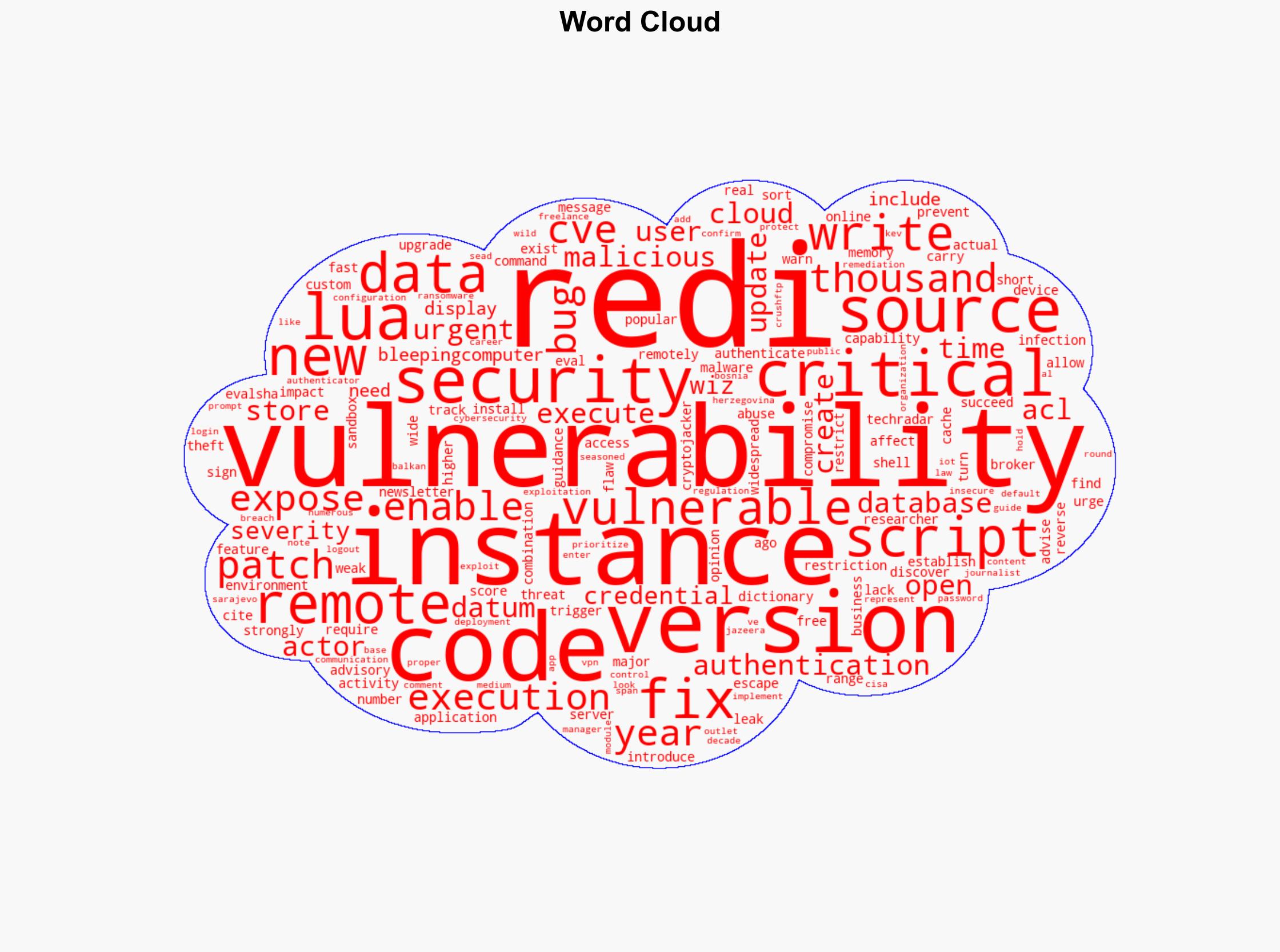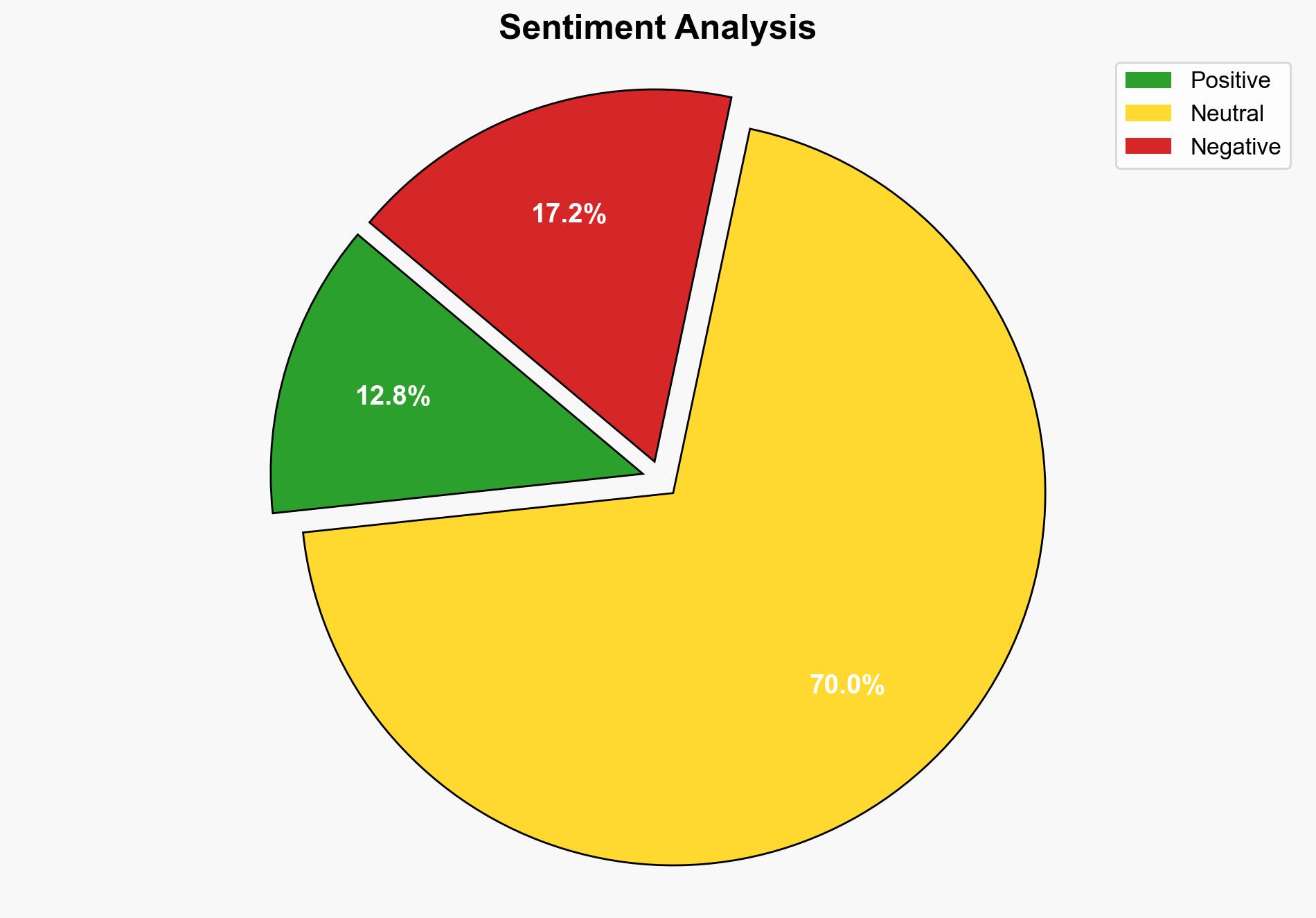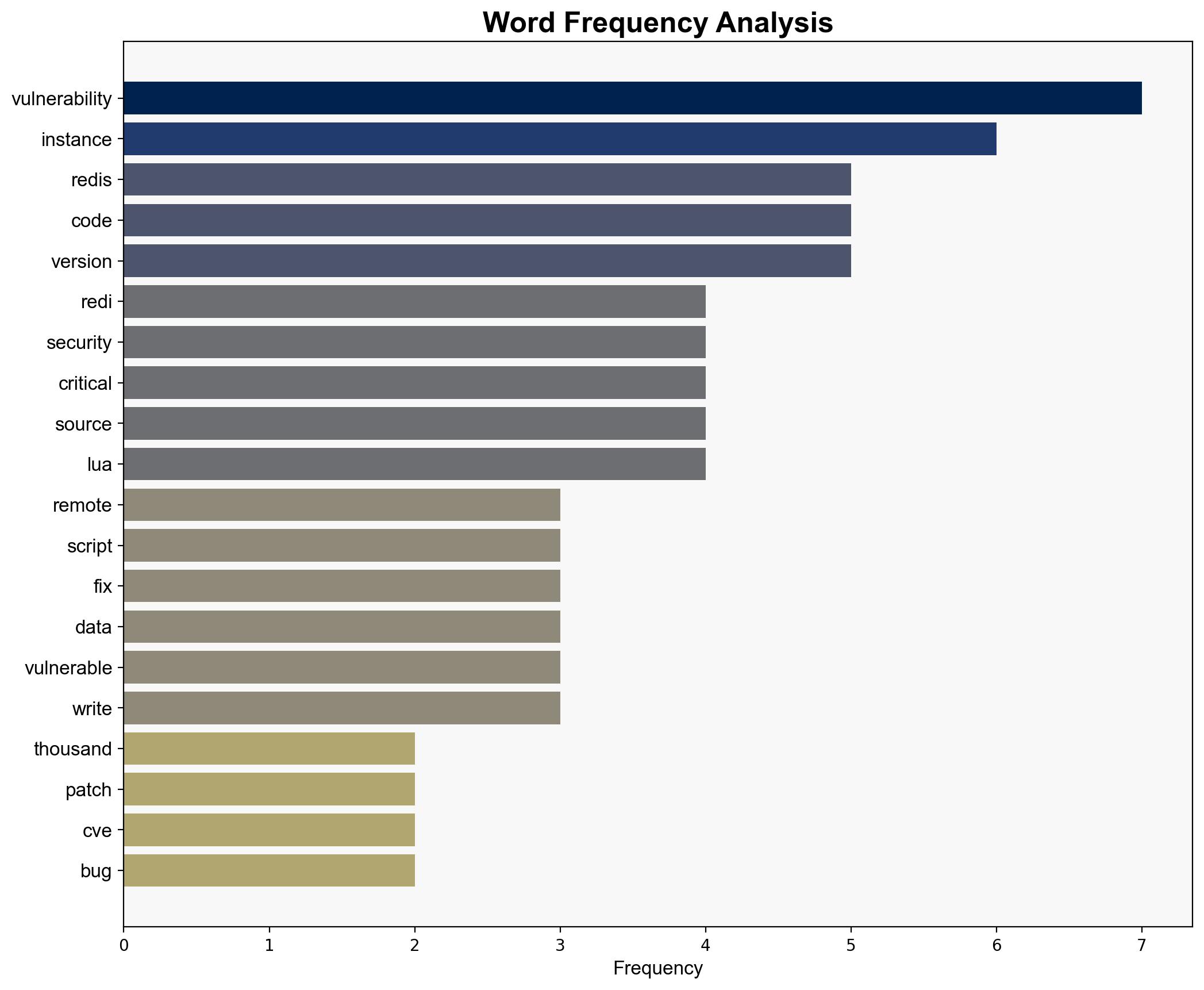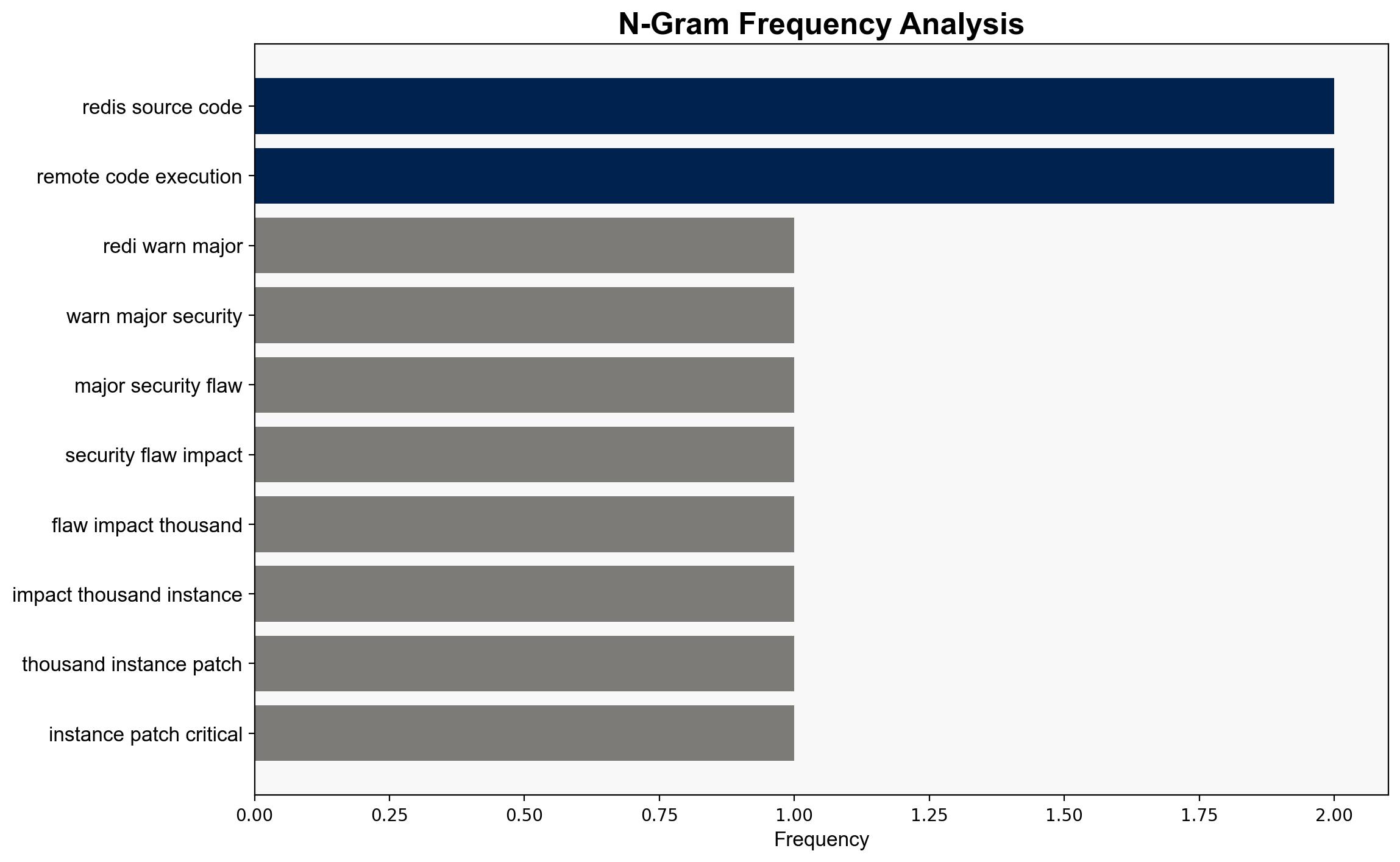Redis warns major security flaw could be impacting thousands of instances – so patch now – TechRadar
Published on: 2025-10-07
Intelligence Report: Redis warns major security flaw could be impacting thousands of instances – so patch now – TechRadar
1. BLUF (Bottom Line Up Front)
The Redis security flaw poses a critical threat to thousands of instances due to its potential for remote code execution, which could lead to significant data breaches and system compromises. The most supported hypothesis is that the vulnerability is actively being exploited by threat actors, necessitating immediate patching and enhanced security measures. Confidence Level: High. Recommended action is urgent patching and implementation of robust access controls.
2. Competing Hypotheses
Hypothesis 1: The Redis vulnerability is being actively exploited by cybercriminals to execute remote code and compromise systems globally. This interpretation is supported by the widespread deployment of Redis and the critical nature of the flaw, which allows for remote code execution without authentication.
Hypothesis 2: The vulnerability, while severe, is not yet widely exploited due to the recent discovery and the ongoing efforts to patch and secure systems. This hypothesis considers the possibility that organizations are responding quickly to advisories, minimizing the window of opportunity for exploitation.
Using ACH 2.0, Hypothesis 1 is better supported due to the critical severity score and the historical precedent of similar vulnerabilities being rapidly exploited once publicly disclosed.
3. Key Assumptions and Red Flags
Assumptions include the belief that all Redis instances are equally vulnerable and that organizations will act promptly to patch systems. A red flag is the lack of specific data on the number of compromised instances, which could indicate underreporting or delayed detection. Additionally, there is an assumption that all instances are exposed online, which may not be accurate.
4. Implications and Strategic Risks
The vulnerability could lead to widespread data breaches, financial loss, and reputational damage for affected organizations. There is a risk of cascading threats, such as the deployment of malware or ransomware, leveraging the vulnerability. Geopolitically, this could be exploited by state-sponsored actors to target critical infrastructure, escalating tensions in cyberspace.
5. Recommendations and Outlook
- Immediate patching of Redis instances and implementation of ACL restrictions to prevent unauthorized access.
- Conduct a comprehensive audit of systems to identify and secure vulnerable instances.
- Scenario Projections:
- Best Case: Rapid patching and security enhancements prevent major incidents, with minimal exploitation.
- Worst Case: Widespread exploitation leads to significant data breaches and operational disruptions.
- Most Likely: A moderate level of exploitation occurs, with some organizations failing to patch promptly.
6. Key Individuals and Entities
No specific individuals are mentioned in the source text. The entities involved include Redis as the software provider, and Wiz and BleepingComputer as reporting organizations.
7. Thematic Tags
national security threats, cybersecurity, counter-terrorism, regional focus





